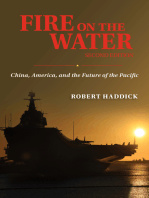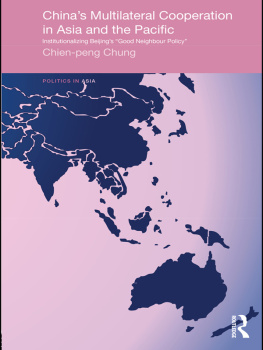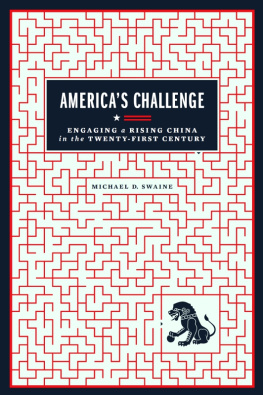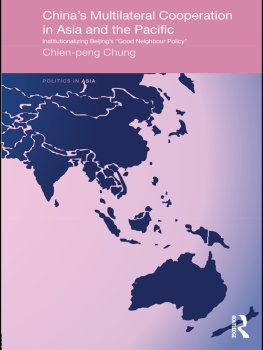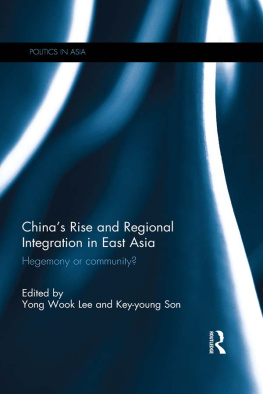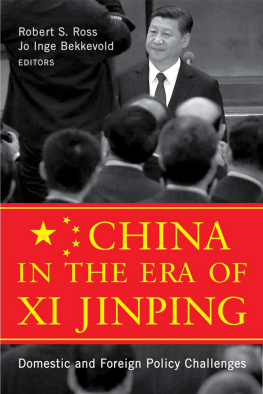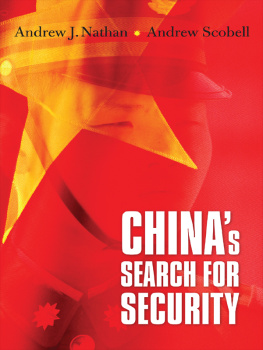


Naval Institute Press
291 Wood Road
Annapolis, MD 21402
2014 by Robert Haddick
All rights reserved. No part of this book may be reproduced or utilized in any form or by any means, electronic or mechanical, including photocopying and recording, or by any information storage and retrieval system, without permission in writing from the publisher.
Library of Congress Cataloging-in-Publication Data
Haddick, Robert.
Fire on water : China, America, and the future of the Pacific / Robert Haddick.
1 online resource.
Includes bibliographical references and index.
Description based on print version record and CIP data provided by publisher; resource not viewed.
ISBN 978-0-87021-060-0 (eBook) 1. Pacific AreaStrategic aspects. 2. Sea-powerPacific Area. 3. United StatesMilitary policy. 4. ChinaStrategic aspects. 5. ChinaMilitary policy. 6. United StatesForeign relationsPacific Area. 7. Pacific AreaForeign relationsUnited States. 8. Security, InternationalPacific Area. I. Title. II. Title: China, America, and the future of the Pacific.
UA830
355.03301823dc23
2014021997

 Print editions meet the requirements of ANSI/NISO z39.48-1992 (Permanence of Paper).
Print editions meet the requirements of ANSI/NISO z39.48-1992 (Permanence of Paper).
22 21 20 19 18 17 16 15 14 9 8 7 6 5 4 3 2 1
First printing
Maps created by Charles Grear.
TO JOSH MANCHESTER
Contents
T his book grew out of a research project I conducted in 2012 and 2013 for U.S. Special Operations Command. The resulting monograph, available to the public at the website of Joint Special Operations University, examined the future role of coalition special operations forces in the context of the security competition in East Asia.
As I completed that study, I concluded that the topic of East Asias security, and Americas role there, required a much broader treatment, one that included assessments and conclusions I had not read elsewhere. There are many excellent books and monographs that address various aspects of the security situation in the Asia-Pacific region, many of which are sources for this book and which are cited in the notes. I saw a need for a book that comprehensively explained the security challenges in the region, Americas interests there, the shortfalls in the current U.S. strategy, and a description of needed reforms. This book thus draws on the research I performed for U.S. Special Operations Command, but goes further. That said, this book is based entirely on open-source research, freely available in the public domain. In addition, the views and conclusions of this book are mine alone and do not necessarily represent the views of any part of the U.S. government.
The growing security competition in East Asia, sparked by the rapid rise in Chinas economic, political, and military power, is likely to be the most consequential national security challenge the United States will face over the next two decades. Indeed, the magnitude of the challenge may exceed that which the U.S. faced during the Cold War, if only because Chinas economic capacity far exceeds that of the former Soviet Union and, should current economic growth trends continue, could soon eclipse that of the United States.
The goal of this book is to raise awareness inside the United States and elsewhere about the deteriorating security situation in East Asia, the consequences if the current course is not altered, and why the U.S. needs to make major changes to its military forces and policies for the region. I have written this book to introduce East Asias emerging security problems to a general audience. I have tried to minimize the amount of military and security jargon, while keeping in mind why the technical performance of military capabilities matters in a strategic context. Many readers will find some of the conclusions in this book to be controversial. If so, a healthy debate over Americas policies for Asia can only be a good thing, since the stakes for the United States are so high.
Finally, this book will have succeeded if it sparks further research on these issues and more discussion among policymakers and the public. An open discussion by policymakers and the public on Americas role and strategy in the Asia-Pacific region is long overdue. It is my hope that this book will make a contribution to that conversation.
ROBERT HADDICK
Washington, D.C.
January 2014
I have received much support during the process of completing this project. I thank the staff at the U.S. Naval Institute Press for their assistance. For over a century, the Naval Institute Press has published history, analysis, and reference books that have been critical to Americas security. I am honored to join that long and distinguished line. I thank Adam Kane, senior acquisitions editor, for taking on my project; Adam Nettina for improving my manuscript and managing the project; Jeanette Nakada, copyeditor, for getting the manuscript in shape; and Janis Jorgensen for assistance with the photo gallery. I also thank Claire Noble, the Press marketing manager, and Judy Heise, publicist, for their efforts promoting the final work. I thank Charles David Grear for preparing the maps. The Naval Institute Press is a remarkably efficient organization and this is due to the professionalism of these people and their colleagues. Naturally, any shortcomings in the book are my responsibility.
I have benefited from many professional relationships in recent years. In 2008 Dave Dilegge and Bill Nagle recruited me to Small Wars Journal and arranged for me to become a military affairs columnist at Foreign Policy magazine. I thank them for these opportunities. Over my years inside the defense community in Washington, D.C., I have formed many friendships and associations from which I benefit professionally every day. I have also benefited greatly from my long friendships with Dan Kingston and Capt. Robert Peters, USN (Ret.). All roads lead back to my friend Josh Manchester, who opened the first door for me, and to whom I have dedicated this book.
I must thank my family for their support. Lois, Bob, Mark, and Barbara have been great friends and supporters for decades. My wifes family has also provided friendship and support for many years.
Finally, my wife, Susan, was essential to the completion of this project. Proficient in Mandarin and a student of China for over two decades, she provided challenging questions and insights all along the way. To her and everyone, thanks.
ADIZ | air defense identification zone |
AIP | air-independent propulsion |
AMRAAM | Advanced Medium Range Air-to-Air Missile |
ASBM | antiship ballistic missile |
ASCM | antiship cruise missile |
ASEAN | Association of Southeast Asian Nations |
Next page

